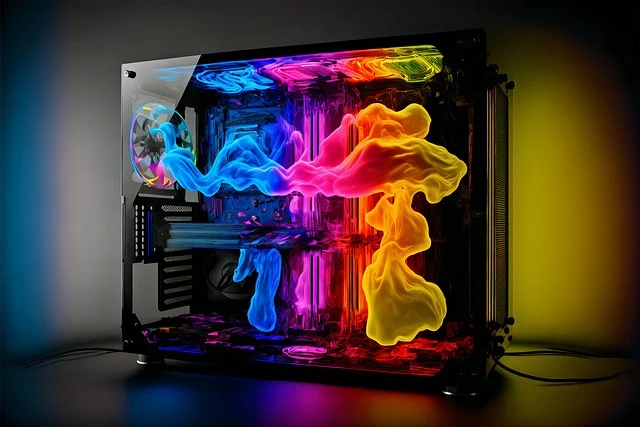
Upgrading your computer’s hardware is an excellent way to boost performance, extend the lifespan of your machine, and adapt to evolving technology. Whether you’re a gamer looking for better graphics, a professional needing faster processing, or someone simply wanting a more responsive system, hardware upgrades can make a significant difference. This guide will walk you through the steps to upgrade your computer’s hardware, from assessing your needs to installing components safely. We’ll cover everything from memory and storage to processors and graphics cards, providing detailed explanations and best practices along the way.
1. Assessing Your Needs: What Do You Want to Achieve?
Before diving into the world of hardware upgrades, it’s essential to define what you hope to accomplish. Ask yourself the following questions:
- Is your computer running slow? You might need more memory (RAM) or faster storage (SSD).
- Are you struggling with graphics performance in games or design software? Consider upgrading your graphics card (GPU).
- Do you need faster data processing or multitasking capabilities? A new CPU (Central Processing Unit) or additional RAM might be the solution.
- Is storage space running out? Adding a larger or secondary hard drive (HDD) or solid-state drive (SSD) could solve this problem.
Once you understand your needs, you’ll be in a better position to identify the specific hardware components that need upgrading.
2. Understanding the Components of Your Computer
CPU (Central Processing Unit)
The CPU is the brain of your computer, responsible for processing instructions and managing tasks. If your computer feels sluggish when running multiple applications or performing intensive tasks like video editing or gaming, upgrading your CPU could make a substantial difference.
GPU (Graphics Processing Unit)
The GPU is responsible for rendering images, videos, and animations. For gamers, graphic designers, and video editors, upgrading the GPU can significantly enhance visual performance, reduce lag, and allow for higher resolution gaming or faster rendering times.
RAM (Random Access Memory)
RAM stores temporary data that your CPU needs to access quickly. The more RAM you have, the better your computer can handle multitasking and resource-heavy applications. Upgrading from 4GB or 8GB to 16GB or even 32GB can make your computer much more responsive.
Storage (HDD vs. SSD)
There are two main types of storage: traditional Hard Disk Drives (HDDs) and faster Solid-State Drives (SSDs). While HDDs offer larger storage capacity at a lower cost, SSDs are significantly faster, allowing for quicker boot times, faster file transfers, and more responsive applications. Upgrading to an SSD is one of the most impactful hardware improvements you can make.
Motherboard
The motherboard is the backbone of your computer, connecting all the components. While upgrading the motherboard can be more complex than upgrading individual components, it can provide support for newer CPUs, GPUs, and RAM if your current setup is outdated.
Power Supply Unit (PSU)
The PSU provides power to all of your components. If you’re upgrading to high-performance components like a new GPU or CPU, you may need to upgrade the PSU to ensure your system has enough power.
3. Choosing the Right Hardware for Your Upgrade
Once you’ve identified the components you want to upgrade, the next step is choosing the right hardware. Here are some tips for making the best choices:
CPU Upgrade
When upgrading your CPU, compatibility with your motherboard is crucial. Each CPU has a specific socket type, and your motherboard must support that socket. Additionally, consider the generation and architecture of the processor. If you’re moving from an older model (e.g., Intel Core i5 to Intel Core i7), ensure that your motherboard and power supply can handle the increased power demand.
GPU Upgrade
For GPU upgrades, consider what kind of performance boost you want. Gamers should look at GPUs that offer better frame rates and support higher resolutions, such as Nvidia’s RTX series or AMD’s Radeon RX series. Also, make sure your case has enough physical space to fit the new GPU and that your power supply is adequate to support the extra load.
RAM Upgrade
Upgrading RAM is one of the simplest and most cost-effective hardware improvements. When choosing RAM, ensure it’s compatible with your motherboard in terms of type (e.g., DDR4), speed, and capacity. It’s also important to match the RAM frequency to your motherboard’s specifications for optimal performance.
Storage Upgrade
If you’re upgrading to an SSD, consider both the capacity and form factor. SSDs come in 2.5-inch and M.2 form factors, with M.2 being smaller and faster. NVMe SSDs, a type of M.2 SSD, provide much faster data transfer speeds than traditional SATA SSDs.
Motherboard Upgrade
When upgrading your motherboard, ensure that it supports your CPU, RAM, and other components. Upgrading the motherboard can unlock newer technologies like PCIe 4.0 for faster storage or USB-C for more versatile connectivity.
PSU Upgrade
Check the wattage requirements of your new components, especially if you’re upgrading the GPU or CPU. A higher wattage PSU may be necessary to ensure stable power delivery. Additionally, check for the right connectors to match your new hardware.
4. Preparing for the Upgrade
Before you begin the physical installation of new components, there are several important preparatory steps:
Backup Your Data
Upgrading hardware can sometimes result in data loss, particularly when replacing storage drives or the motherboard. Back up all important files to an external drive or cloud storage to avoid losing any data.
Check Compatibility
Ensure that the new hardware components are compatible with your existing system, including the motherboard, power supply, and case dimensions. You can use online tools like PCPartPicker to verify compatibility before purchasing.
Gather Tools
Most hardware upgrades require a few basic tools, such as a Phillips-head screwdriver, anti-static wristband, and zip ties for cable management. Make sure you have these on hand before starting the upgrade process.
5. The Installation Process
Step 1: Turn Off and Unplug the Computer
Before opening your computer case, turn off the system and unplug it from the power source. This prevents electrical shock and protects your components from accidental damage.
Step 2: Open the Case
Use a screwdriver to remove the screws holding the side panel of your computer case. Slide the panel off to expose the internal components.
Step 3: Install the New Hardware
- Installing a New CPU: Carefully remove the old CPU by releasing the retention lever on the motherboard. Align the new CPU with the socket (usually indicated by a small triangle on one corner), place it in the socket, and secure the retention lever. Don’t forget to apply thermal paste before reinstalling the CPU cooler.
- Installing a New GPU: Remove the PCIe slot cover at the back of the case, then align the new GPU with the PCIe slot on the motherboard. Push the card down gently until it clicks into place. Secure it with screws and connect any necessary power cables from the PSU.
- Installing RAM: RAM modules can be installed by opening the retention clips on the motherboard’s RAM slots. Align the notch on the RAM module with the slot and press down firmly until the clips click into place.
- Installing a New SSD/HDD: For 2.5-inch drives, use a SATA cable to connect the SSD to the motherboard, then secure it in the drive bay. For M.2 drives, insert the SSD into the M.2 slot on the motherboard and secure it with a small screw.
Step 4: Cable Management
Organize and manage your cables to ensure good airflow and easy access to your components. Use zip ties to bundle cables and keep them away from fans or heat-sensitive areas.
Step 5: Close the Case
Once all components are installed and secured, replace the side panel of your computer case and screw it back into place.
6. Powering On and Testing Your Upgrades
With the new components installed, it’s time to power on your computer and ensure everything is functioning correctly.
- Boot into BIOS: Before booting into your operating system, enter the BIOS/UEFI to verify that the new hardware is recognized. You may need to adjust settings, particularly if you’ve installed new storage or RAM.
- Run Performance Tests: Once your system is up and running, test the performance of your upgraded hardware. Use benchmarking software like Cinebench for CPU testing or 3DMark for GPU testing to confirm that the upgrades have improved performance as expected.
7. Troubleshooting Common Issues
Sometimes things don’t go as planned during an upgrade. Here are a few common issues and how to troubleshoot them:
- System won’t boot: Double-check that all power connections are secure and that the components are seated correctly in their slots.
- Hardware not recognized: Ensure that the new components are compatible with your motherboard. Update your BIOS if necessary to support new CPUs or memory.
- Overheating: Make sure that your cooling system is working properly, and check the thermal paste on the CPU. Clean out dust and ensure good airflow within the case.



